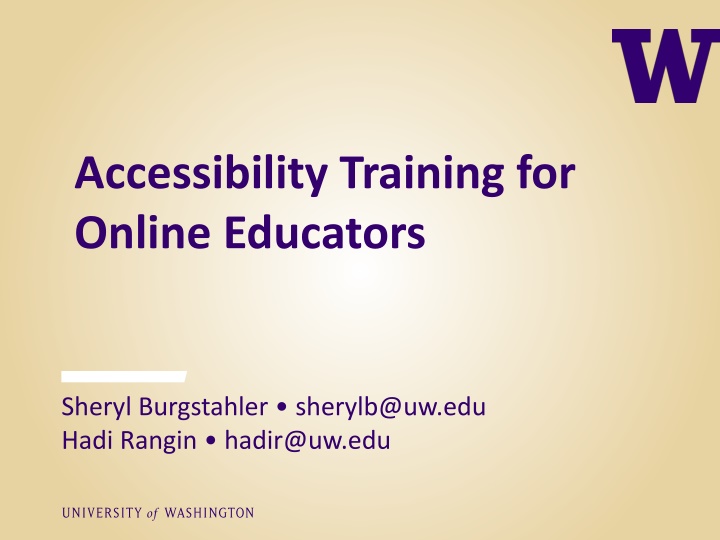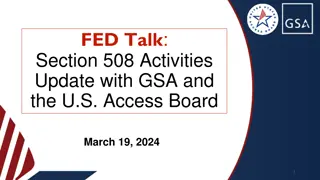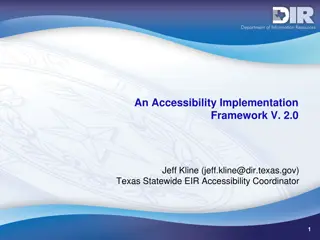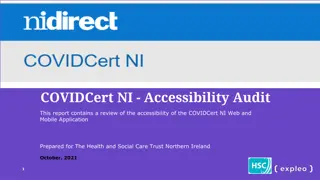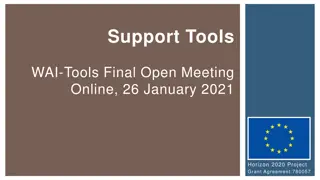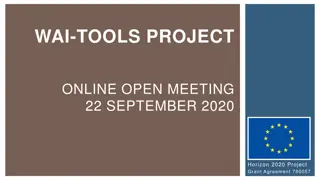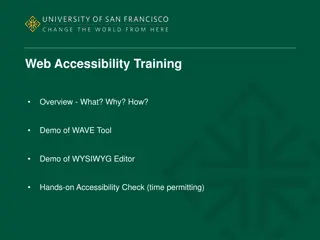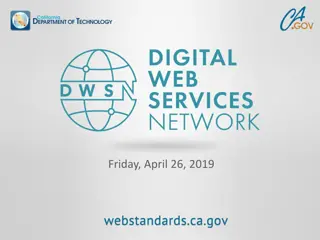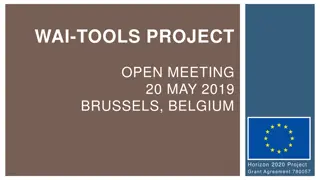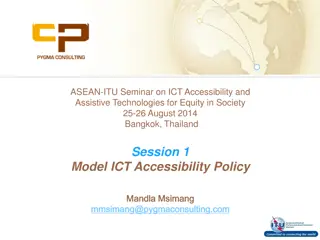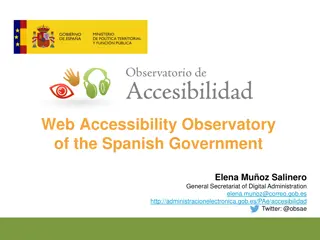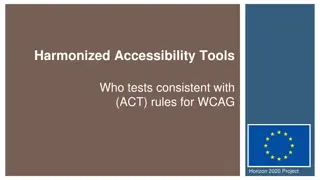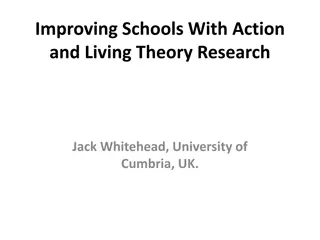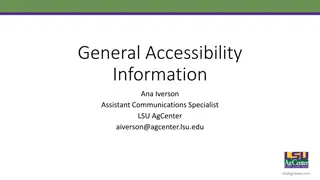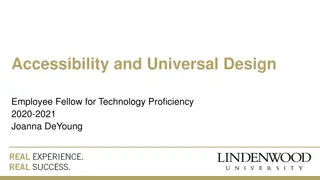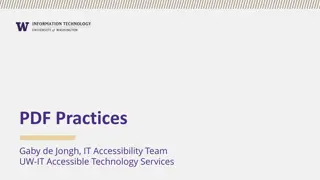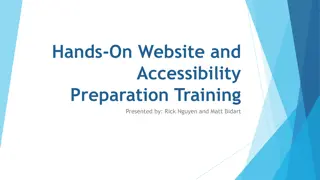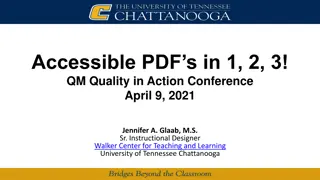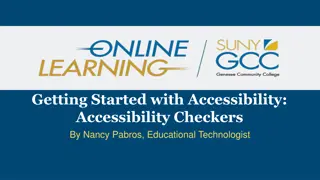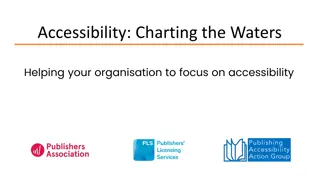Accessibility Training for Online Educators: Strategies and Considerations
Explore the essential components of providing accessibility training to online educators, content developers, and program administrators. Delve into the factors driving the need for inclusive online learning, stakeholders involved, common accommodations, and examples of online courses emphasizing accessibility. Learn how to create welcoming, accessible, and usable online courses for all learners, including those with disabilities.
Download Presentation

Please find below an Image/Link to download the presentation.
The content on the website is provided AS IS for your information and personal use only. It may not be sold, licensed, or shared on other websites without obtaining consent from the author.If you encounter any issues during the download, it is possible that the publisher has removed the file from their server.
You are allowed to download the files provided on this website for personal or commercial use, subject to the condition that they are used lawfully. All files are the property of their respective owners.
The content on the website is provided AS IS for your information and personal use only. It may not be sold, licensed, or shared on other websites without obtaining consent from the author.
E N D
Presentation Transcript
Accessibility Training for Online Educators Sheryl Burgstahler sherylb@uw.edu Hadi Rangin hadir@uw.edu
Sheryls First Online Course >First online learning course at UW, 1995 >Co-instructor Dr. Norm Coombs >Title: Adaptive Technology for People with Disabilities >Technology: Email, discussion list, Gopher server, telnet, file transfer protocol >Mailed materials: publications, captioned & audio described VHS videos
Presentation objective >Compare and contrast two options for providing accessibility training to online learning instructors, content developers, & program administrators
Factors >Increasing numbers of learning opportunities delivered online & online tools >Increasing diversity on postsecondary campuses >legislation to ensure equal access for people with disabilities world-wide >civil rights complaints about inaccessible design of IT
A Goal for Online Learning >Courses & programs that are welcoming to, accessible to, & usable by all potential students, including those with disabilities
Stakeholders >Students >Instructors >Online course designers >IT technical & support personnel >Disability service providers >Campus leaders >Learning management system (LMS) providers
Most Common Accommodations for Online Courses at UW >Alternate testing extended time, permission to use speech- to-text software like Dragon > Accessible instructional materials audio books, accessible files Avg 26k pages evaluated each quarter >Captioning 5.5 hours of video/wk = $10,395/quarter
Two Online Courses >Rutgers University >University of Illinois
Rutgers University >Instructor: Sheryl Burgstahler >Background >Target: Online instructors, course designers, program administrators >Format: Online, asynchronous, universally designed >LMS: eCollege >Length: 6 weeks, noncredit
Prerequisites, Rutgers >Low level of technical expertise required >Students are expected to engage about 2 hours per week
Student Objectives, Rutgers >Describe diversity, accommodations, potential IT/course access challenges & solutions, AT, UD, civil rights, legislation, accessible IT guidelines/standards >Describe accessible & usable design of online content (e.g., for content design, web pages, multimedia, file formats) >Be aware of roles & resources regarding the creation of accessible online courses
Instructional Strategies, Rutgers >Modules with overview content & links to videos & resources >Discussions post message & respond to at least one other message >Joint development of webliography >Project, with extended time option
Evaluation, Rutgers >Students reported gains in knowledge about access challenges, legal issues, & making courses accessible >Students expect to apply what they learned >Challenges for instructor: wide variety of technology skills of students materials not available in accessible format covering so much content in 12 total hours
University of Illinois >Universal Design for Online Learning >Instructors: Hadi Rangin, Marc Thompson >Background >Target: Instructors & Course Designers >Format: Online, asynchronous, universally designed >LMS: Moodle >Length: 8 weeks, 3 credits
Prerequisites, Illinois >Basic familiarity with Word, PowerPoint, & Adobe Acrobat applications &, ideally, with an HTML authoring tool >Plan to engage about 10 hours per week
Students Objectives, Illinois >Describe UD principles for online learning, how people with disabilities access IT, & potential accessibility/usability issues >Discuss basic course considerations & best practices for distance learning >Discuss UD practices for the web >Create usable & accessible content in HTML, Word, PowerPoint & PDF
Instructional Strategies, Illinois >Modules with overview content & links to videos & resources, including OPTIONAL content >Discussions post message & respond to at least one other message >Hands-on experiences in developing accessible content >Project
Evaluation, Illinois >Students reported gains in knowledge >Students demonstrated skills in making courses accessible >Students expect to apply what they learned >Challenges for instructors: addressing issues related to wide variety of tech skills students who do not engage 10 hours/week
Lessons Learned >Model UD in the delivery of the course >An asynchronous mode offers flexibility >Tailor instruction to specific stakeholders & consider offering multiple short courses >Assign projects relevant to student roles >Make expectations clear RE linked resources >Expect variability in student technical expertise & give adequate individual support
Resources >Sheryl Burgstahler, sherylb@uw.edu >Hadi Rangin, hadir@uw.edu > AccessDL www.uw.edu/doit/programs/accessdl
